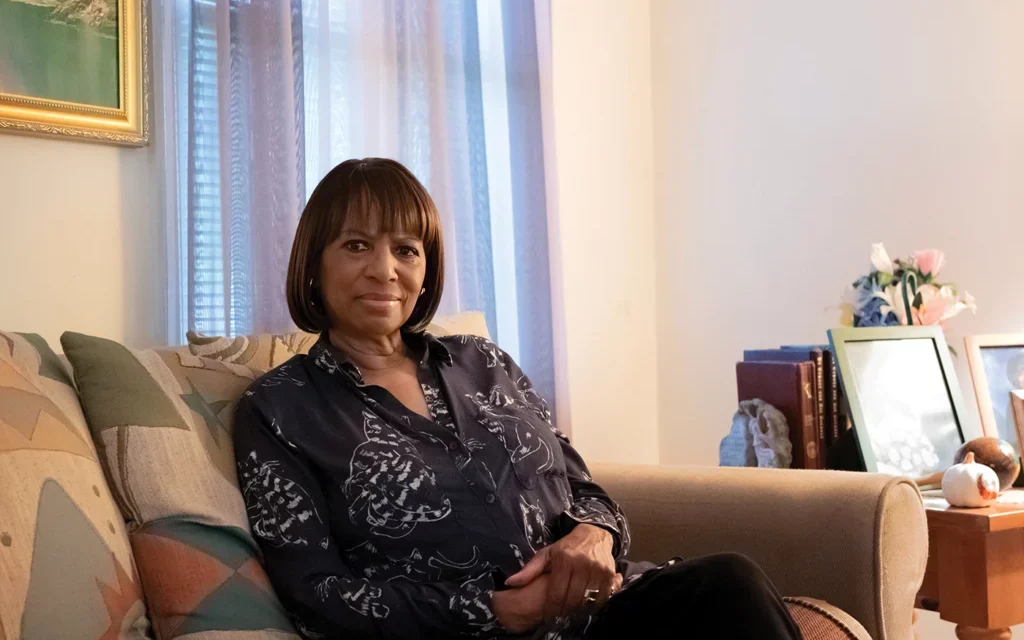In 2019, Dan Gasby, the husband of fashion guru and restaurateur B. Smith, made a public announcement in The Washington Post: While he, a Black man, remained devoted to his Black wife, who was diagnosed with early-onset Alzheimer’s in 2013, he was also in a committed relationship with another woman, Alex Lerner, who is white.
“If This Is Us and Modern Family came together, it would be us,” Gasby told The Washington Post. Gasby’s daughter, Dana, agreed, telling The Washington Post that she’s glad her father met Lerner. “When he told me, I was like, Thank God. I’m happy,” she said.
Gasby’s admission ignited a virulent backlash, especially on the Facebook page he was shepherding for his wife’s lifestyle brand. “[Lerner’s] having her lifestyle funded by [this] Black woman, and this white woman didn’t have to build a thing with you,” YouTuber Paris Milan said in a 2018 video that has accrued more than 215,000 views. When Gasby appeared on The View in 2019, the hosts pilloried him for moving Lerner into the home he shared with Smith. Co-host Sunny Hostin, who was friends with Smith and Gasby, said that moving Lerner in was “very disrespectful,” to which Gasby replied, “I am keeping my vows to protect and care for [Smith],” who he said encouraged him to move forward with his life after her diagnosis. “When we got the diagnosis at Mount Sinai … she stopped me, put her hand on my arm and … she said to me, ‘I want you to go on,’” Gasby said. “I’m not doing anything we didn’t [discuss].”
While many were upset that Lerner was helping Gasby care for Smith, who died in 2020, this complicated love story is an example of an extended family coming together to combat Alzheimer’s, one of the cruelest diseases of our time. It’s also a starting point for an honest conversation about the emotional needs of those caring for loved ones with incurable diseases.
I think about caregiving a lot. I’m a healthy 73-year-old African American woman, and my husband, Joe, is a 76-year-old diabetic and a cancer survivor. The aggressive chemotherapy and radiation that saved his life 25 years ago destroyed some of his brain cells and activated a long-dormant genetic diabetes trait. He exercises daily, takes all his meds, and remains mentally sharp—and he’s also at high risk of developing some form of dementia. I’m haunted by the possibility that I may one day have to be his full-time caregiver.
At its best and most challenging, marriage is about spouses caring for one another, something Joe and I have done for 33 years. During Joe’s cancer journey, I insisted that his family recognize my need for emotional support. They eagerly responded to my call for help and buoyed my spirits: Joe’s relatives asked me how I was doing when they called to check on him, which had not happened before. And, in the last stages of Joe’s treatment, his parents opened their home to him so I could live in Richmond, Virginia, three days a week and teach at Virginia Commonwealth University.
Though Joe’s cancer has been in remission since 1996, we’ve still talked about death, what we want, and what we don’t want. He has told me that if he declines beyond recognition he wants me to “move on.” Still, there’s nothing that can prepare you to watch the decline of your life partner while also being their administrator, appointment maker, chauffeur, cook, nurse, and doctor.
Over the past several years, I have watched my oldest friend care for her bedridden mother while also taking time for herself. Her mother worked for the federal government for 30 years, so my friend depended on the generous resources of her mother’s pension, Social Security, and Medicare to provide 24-hour care when needed. At the same time, I have seen another friend struggle with indifferent doctors and incompetent nursing staff as she tries to piece together support for her husband while he endures the final stages of Parkinson’s disease.
Caregivers are a national resource and a national treasure, but they’re not given the financial support, respite care, support groups, and time off that they deserve. They’re not recognized as individuals who have often quit their jobs, changed the direction of their lives, and given up their dreams to support someone else.
The statistics are stark: According to a 2020 survey conducted by the National Alliance for Caregiving and AARP, 53 million people in the United States are caregivers for someone who is chronically ill or disabled. Of those, more than 34 million people in the U.S. have provided unpaid caregiving to an adult aged 50 or over. The number of people in their 20s and 30s who are caregivers is increasing every year, nearly 25% of adults between the ages of 45 and 64 are caregivers, and 19% of adults over the age of 65 are caring for a friend or family member. All this caregiving, done mostly by women, takes place against the backdrop of a health care system that’s overly bureaucratic, difficult to manage, and does little to recognize the material or emotional needs of caregivers.
While nearly every state provides financial assistance to family caregivers, it often isn’t enough to cover all the costs of care, including home health aides, health insurance, medical transport, and medications. Long-term care insurance, veterans benefits, and Medicaid help to fill in the financial gap, but most older people age in their homes, because their families can’t afford to put them in assisted living or nursing homes. In 2022, the Department of Health and Human Services began attempting to address these concerns with its National Strategy to Support Family Caregivers, which highlights nearly 350 actions various federal agencies can take to better support family caregivers and 150 additional actions that other levels of government can adopt.
Some of those actions include access to AmeriCorps Seniors, which offers short-term respite care to family caregivers in need of a break; updating rules for the Centers of Medicare and Medicaid Services to ensure family caregivers are involved in hospital discharge planning for their loved ones; and leveraging Medicaid funding to ensure caregivers receive better pay and the tax credits that are available to them. But as caregivers, particularly older caregivers caring for other aging people, wait for these actions to improve their lives, they’re taking respite care into their own hands.
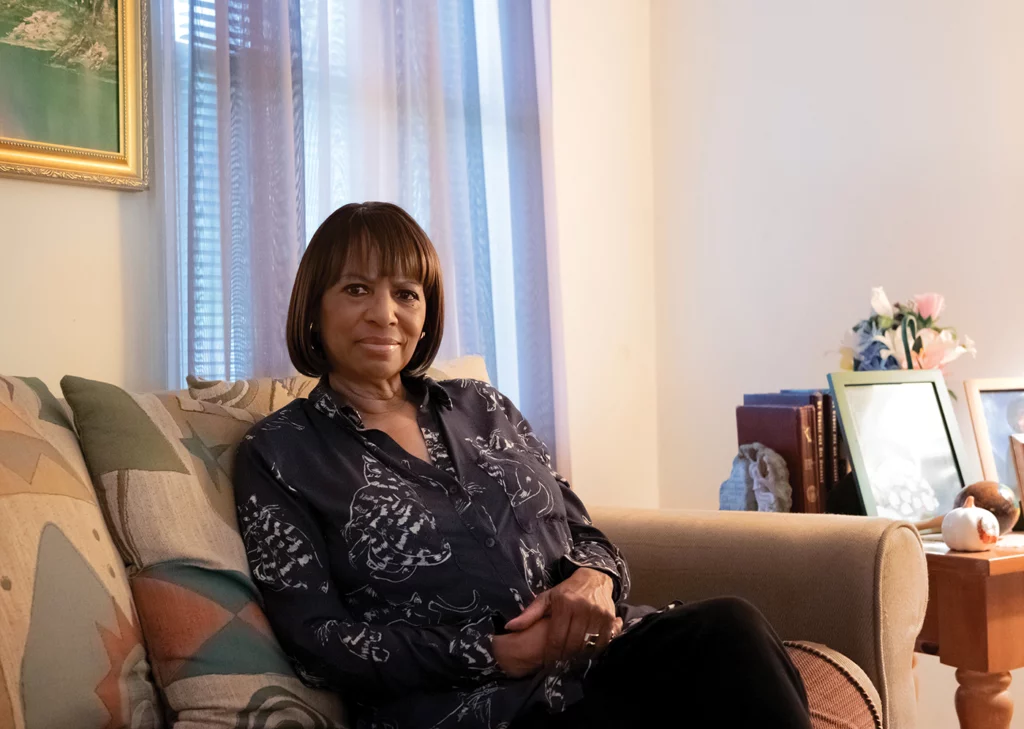
There’s a saying among Black American Christians that “God never gives you more than you can handle.” Throughout my life, my acceptance of that assertion has waxed and waned, but 76-year-old Regina Wells, a retired case manager living in Washington, D.C., has an unshakable belief in that adage. And yet, her resilience, generous spirit, and deep religious faith were tested as she served as a full-time caregiver for her husband and her mother for more than a decade.
Given her career, Wells was accustomed to stress, but nothing could’ve prepared her for the rigors of being a full-time caregiver. Brough, her husband of 45 years, suffered a series of strokes over the course of three years. He also had high blood pressure and gout, for which he had resisted treatment, and over time, he developed congestive heart failure and sleep apnea. “He was a terrible patient,” Wells says. “He didn’t follow the doctor’s instructions. … He would insist that he was OK, that he didn’t need help, and then fall or slide off the bed.”
After Brough’s last stroke in 2022, Wells realized she could no longer care for him on her own and that he would receive better care in a nursing home. The same year, Wells’ mother had several strokes and was diagnosed with breast cancer. Studies have shown that more than 70% of full-time caregivers over the age of 70 die before those they’re caring for. That can be partially attributed to “caregiver stress syndrome,” a condition that can lead to physical, mental, and emotional exhaustion. As a result, caregivers are at risk for developing many chronic illnesses like diabetes, heart disease, and high blood pressure. Or, as geriatric care manager Ann Craynon told me, “Health problems often go unaddressed in caregivers.”
People were telling me to take care of myself. There were many offers of help that looking back I wish I had accepted. I cried a couple of times, but I wouldn’t break down. I felt that I couldn’t.”
—Regina Wells
Wells beat those statistics. However, caretaking still took an enormous toll on her. While her friends, siblings, pastor, and children offered to help, she didn’t want to disrupt their lives by sharing the caregiving responsibilities. “People were telling me to take care of myself,” she says. “There were many offers of help that, looking back, I wish I had accepted. I cried a couple of times, but I wouldn’t break down. I felt that I couldn’t.”
Eventually, Wells reached a breaking point. “I remember one day when I felt so drained and tired and I did break down,” she says. “I told them both, ‘I can’t take care of you.’ I screamed in frustration and then I snapped out of it. I came back to reality.” For Wells, that reality included a diagnosis of B-cell lymphoma followed by six months of cancer treatments. “Luckily it was a nonaggressive cancer, and I didn’t have a bad reaction to the monthly chemotherapy treatments,” Wells says. “When I’d come home from the treatments, I’d take my nap when my mother napped. I adapted to her schedule.”
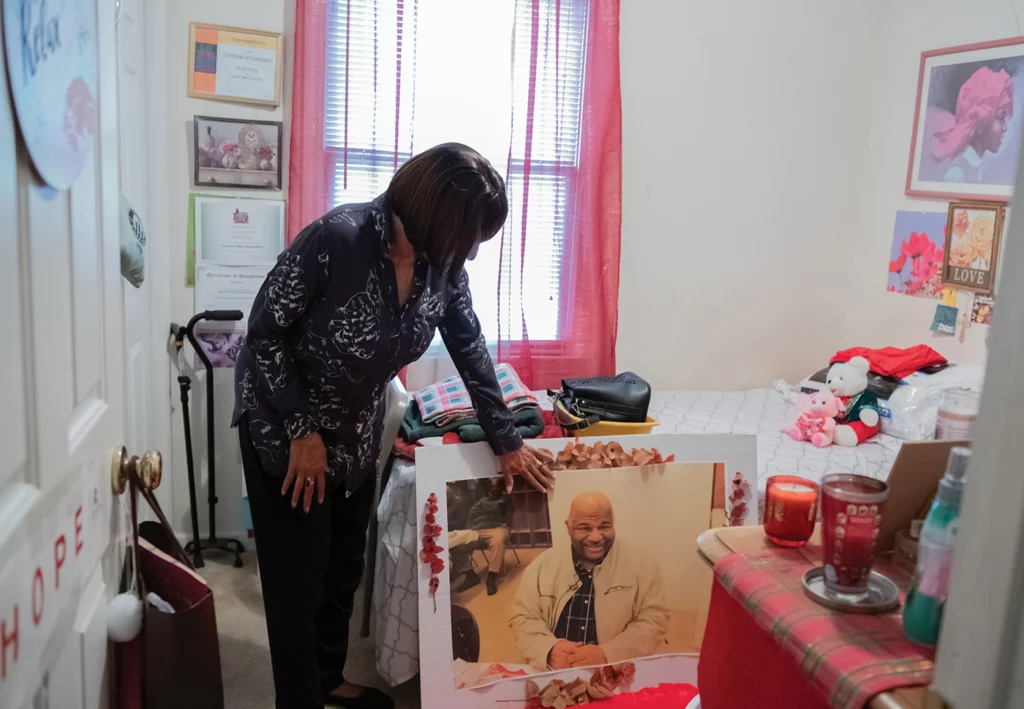
Wells developed cancer in 2021, a year before Brough died. Her mother died in 2023 at the age of 95. Wells is now a widow and a motherless child, grieving her mother and her husband in the same apartment in Prince George’s County, Maryland, where she and Brough raised their children. “I miss them both,” she says. “I talk to them constantly, just like they are still here. But I am relieved, relaxed, and peaceful. It’s like they both had to die for me to finally get some rest, to get some time for myself.”
Wells is a good wife, a good daughter, and a “strong Black woman,” convinced that she had no time for tears, that vulnerability was a weakness, and that her needs and well-being were trumped by the needs of her family. To accept too much help would have undermined her sense of being capable. “Today I would tell anyone going through what I went through to ask for help, accept it when it is given, and take care of yourself,” she says.
Kimberly Fleming, a licensed clinical social worker, social psychologist, and certified telemental health provider, is doing everything she can to preserve her mental and physical health as she cares for Ben, her husband of 27 years, who was initially diagnosed with mixed dementia (Alzheimer’s and vascular dementia) in 2018, and was rediagnosed with Alzheimer’s Lewy body dementia (LBD) in 2022. He’s now in stage 6, so he can’t move his legs, and he’s developed Parkinson’s-like symptoms. While Ben needs 24-hour nursing assistance, the couple can’t afford it; instead, a certified nursing assistant is with Ben eight hours on Monday, Tuesday, and Thursday, and four hours each day of the rest of the week. “After they leave it’s all on me,” Fleming says. “The feeding, dressing him, getting him to the bathroom. I have shoulder and hip problems from lifting him. I don’t sleep much at night fearing he will wake up and try to go to the bathroom and fall.”
After Ben’s diagnosis, Fleming moved them from a four-story house in Edison, New Jersey, to a smaller house in Charleston, South Carolina, to be closer to Ben’s daughter, who was stationed at a nearby army base. However, when Ben’s daughter was reassigned to Japan six months later, it left Fleming with few options. “[Ben’s daughter being reassigned] left me stranded in a sense,” she says. “Navigating a health care system in a new state, dealing with Ben’s nearby relatives who, when they visited us, despite Ben’s clear decline, patted my hand and told me, ‘He’ll get better.’ I wanted to scream, ‘No, he won’t!’ but I understood their inability to accept what I struggled to accept every day.”
For many Black Americans, caring for an aging family member is considered a point of pride because it allows the family to keep their aging loved ones close. As AARP notes in a 2021 article, Black Americans tend to have more “burdensome” caregiving arrangements since Black caregivers tend to be younger and unmarried and have to balance caring for their loved one with a full-time job. And yet, Black caregivers tend to cope better than their white counterparts, and a majority “find a sense of purpose” in caring for their aging relatives.
Dr. Thomas K. M. Cudjoe, a geriatrician and physician at Johns Hopkins School of Medicine, who cares for the elderly at Johns Hopkins Hospital in Baltimore, knows this firsthand. “I wouldn’t be a physician if not for what I learned and experienced helping my family care for my bedridden grandmother and my grandfather who had dementia, from the time I was 7 to 17,” he says. “There is joy and peace that comes with caregiving. The peace of mind and joy of caring for someone who once cared for you, of giving of yourself to others, easing their pain. And in my community, we aspire to be there for family members. They want to care for their family as an act of love and devotion.”
Fleming knows that the end is near for her husband. There’s only one stage of LBD left, and he’s currently in hospice care. “I’m watching my husband die a bit more each day,” she says. “We had a great life together; we traveled, he supported me, we had fun, we had love, and I find myself living in those memories to keep me going. It’s so hard to grieve [for] someone you are looking at every day.” While she says this has been one of the hardest experiences of her life, she’s also refused to lose herself. She has created a space in their home where she meditates, practices yoga, puts together puzzles for stress reduction, and uses Zoom not only for her continued part-time practice but for regular wellness check-ins with a group of other therapists who provide advice and comfort.
From her perspective, caring for herself is one of the best ways she can provide for her husband. “Sometimes when the nurse is here, I will go for a walk around a nearby lake, drive to a park, and just sit in my car for a while,” she says. “I’m still working with some clients in my practice who are going through what I am going through, and I tell them what I tell myself and what I try to live: Caring for yourself is caring for your partner. Allow yourself to cry.”
When I interviewed Fleming via video, I noticed that she was dressed up and wearing makeup. “I’m going out tonight,” she says. “We’ve lived in this community for over a year, and tonight there is a community social event. I’m going. A family member will watch Ben. This will be the first time since we moved here that I have gone out to anything like this. Ben’s care has been all-consuming.”

A weeklong vacation in Scotland was the perfect mix of rest, relaxation, stimulation, and excitement for Dr. Sherita Hill Golden, who had never traveled to Europe before. The long-overdue vacation was especially meaningful after several years of supporting her elderly parents.
As vice president and chief diversity officer at Johns Hopkins Medicine, as well as a professor of medicine, Golden and her staff oversee the biomedical workforce diversity initiatives and health equity for the Johns Hopkins Medical system, which includes five hospitals in Maryland and one in Miami. At 55, she is at the top of her game, a Black woman in a key position to impact medical policy. She loves her job, but the responsibility of supporting her father in his role as the primary caregiver for her mother, who has Parkinson’s, has required major shifts in her life.
For years, Golden has served as a guide, adviser, consultant, and watchdog as her parents age and as her mother’s Parkinson’s symptoms progress. She’s the one who urged her parents to move from their two-story home in Bowie, Maryland, after her mother fell down the stairs. There had been a time when she and her mom could go to lunch and go shopping together, but that fall changed everything. Though it took months of planning—and then COVID-19 stalled the move for a year—Golden was eventually able to help her parents move into an independent living community about 20 minutes from her home.
While Golden’s parents have access to medical care, social workers, and even a gym, caregiving still took a toll on her father. Shortly after her return from Scotland, her father passed out and was hospitalized for what his doctors believe was dehydration. It wasn’t until his hospitalization that her mother confessed that her father was falling asleep whenever he sat down. Golden’s father, a proud man devoted to caring for his wife, kept all his fatigue and stress a secret from his daughter.
When her father was hospitalized, Golden took a week off work to care for her mom. Though her son and a friend helped her, caregiving was still overwhelming. “I was wiped out by the end of that week,” she says. “When [my] dad was released, we knew he had to get more help at home. He needed a break.”
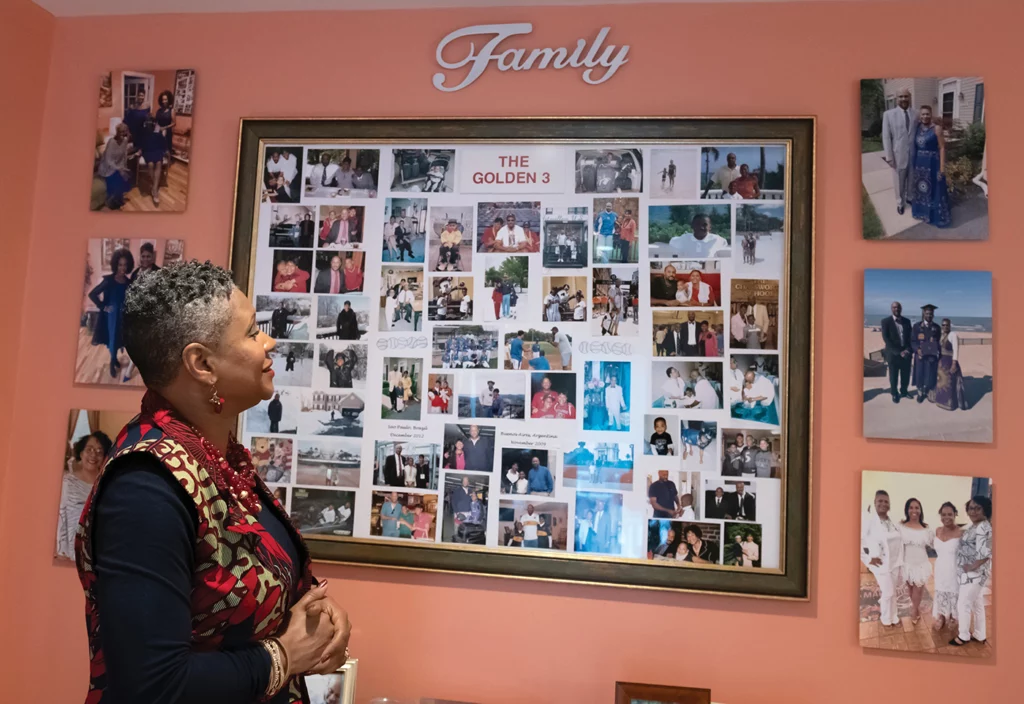
Since that time, Golden has begun seeing a therapist and has become a member of the Binti Circle, a support group for Black women caregiving for their parents. Those two decisions have given her the tools she needs to be a more effective caregiver, daughter, wife, and mother. “I had to learn how to set boundaries and how to say no to requests from my family that were unreasonable,” she says. “I had to learn that I could no longer depend on my parents for the kind of deep emotional support they offered me in the past because of all they were going through. … And I realized that I needed someone other than my husband and my son and friends to vent to, to share my frustration and grief, someone outside the family.”
I had to learn that I could no longer depend on my parents for the kind of deep emotional support they offered me in the past because of all they were going through.”
—Dr. Sherita Golden
Overwhelmed caregivers need the kind of guidance and support Golden is now receiving. For more than a decade, Paula Rice was a New York–based outreach director for the Alzheimer’s Association. “People often don’t know how to ask for help or where to get it,” she says. She encourages caregivers to contact the national foundations for the illness or disease of the person they are caring for. Those foundations can provide information about support groups, the illness itself, and even legal advice. Rice says reaching out to the foundations is a task family and friends can perform for the primary caregiver as a means of support.
Shadowing all conversations about caring for the elderly is dying and death, uncomfortable but essential topics that seem to be unspeakable until the end of life is near or has come. In order to relieve stress, geriatric care manager Craynon recommends that aging people, especially those with children, have these difficult conversations with their potential caregivers. “A gift we give our children is telling them what we want long-term caregiving and our dying to look like,” she says. “It is important to talk about this. Don’t be afraid to talk about the end.”
Craynon suggests filling out all important forms ahead of time, including power of attorney, wills, and advance directives. For caregivers with parents who are hesitant to discuss these matters, Craynon suggests this language: “As your child, I am concerned about knowing what you want. That is an important thing that I can do for you—honor your wishes—but you have to tell me what they are.”
Rosemary Allender, who provided geriatric care services to families before retiring, agrees. She encourages families to design a plan of care that minimizes caregiver stress, expands support systems, and maximizes independence and quality of life for those who require care. “The most important thing is to have open communication and conversations long before the family faces the crisis of how to care for Mom or Dad,” she says. “Call a family meeting and bring family members together to create an action plan to implement if faced with a long-term caregiving crisis. Everyone can’t do everything, but everyone can do something. These conversations, if held in advance, make responding to the needs of elderly family members much easier.”
In 2011, former first lady Rosalynn Carter offered one of the most apt and moving descriptions in a written testimony for a Senate Special Committee on Aging: “There are only four kinds of people in the world: Those who have been caregivers. Those who are currently caregivers. Those who will be caregivers. And those who will need caregivers,” she said. As I prepare emotionally to continue to age, I prepare for the possibility of being a caregiver by remembering that because my life is blessed, every day of my life I am caring in some way for someone, and someone is caring in some way for me.
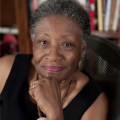
|
Marita Golden
is the co-founder and president emeritus of the Zora Neale Hurston/Richard Wright Foundation, a veteran teacher of writing, and an award-winning author. She has written for Essence, The Root, Bitch, The New York Times, and The Washington Post. |

